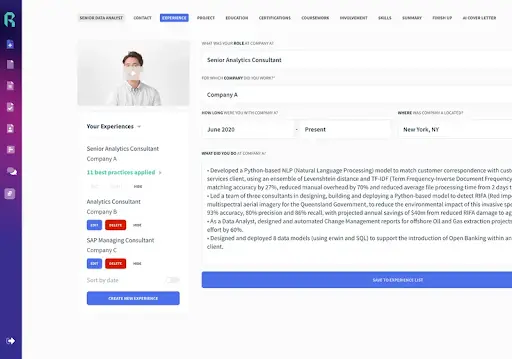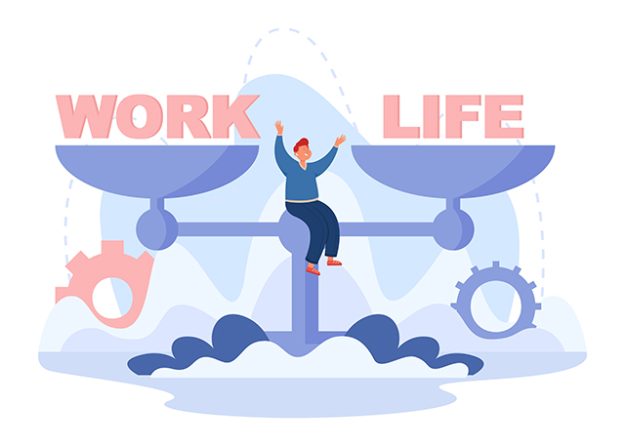
We all know the benefits of professional growth. We also know that it takes time—something which most of us lack today. Personal commitments, office workloads, and dynamically changing office requirements are a few reasons your employees don’t find space to think about their professional growth. But ignoring professional growth pushes their career and your business to the backseat.
They might miss a leadership responsibility or, worse—your business may lose a contract or client because of a lack of skilled employees.
With the number of skills required for a single job increasing by 10% per year, professional growth helps your employees stay competitive. Companies that invest in professional growth and development stay competitive.
In this article, we explore companies' strategies for professional growth and explain why they are necessary.
We humans search for instant gratification, whether purchasing a skincare product or learning something new. If we don’t see the benefits within a few days, we dump it and try something else.
Professional growth shares this same story. So, having a strong objective or purpose is important to help your employees grow.
While your company may have performance appraisals to evaluate how employees are doing and help them grow, not having clear performance appraisal objectives results in only short-term gains.
When you make performance objectives a part of your company’s appraisal, you create a workplace that values employee growth.
For instance, some examples of performance objectives include increasing workplace productivity, enhancing employee engagement, or understanding training needs.
Clearly defined objectives ensure your employees no longer fear appraisals because they see it as a way to grow professionally. It becomes more about using opportunities to learn and improve.
From renowned CEOs to world-class athletes, almost every top performer has the backing of an experienced coach, but in business, employees don’t enjoy just elite perks. However, with the changing business dynamics, we all deserve a coach.
Today, the right career coaching results in a happy and productive workplace culture.
Interestingly, when employees feel they cannot develop or find the support they need to grow, they are 12 times more likely to quit.
With the expertise of a coach, your employees gain a true understanding of their career journey and the areas in which they might gain additional knowledge. Apart from helping in your employees’ career journey, these coaches create a career handbook, offer tips on creating resumes, recommend a summary generator for resumes, provide examples of how to write effective cover letters, and share strategies to master internal interviews.

But before committing to career coaching, ensure it matches your employee’s expectations and requirements.
For instance, if your employees want a transfer to another department or role, coaches can work with them closely to evaluate their current competencies and understand potential areas of development. They help employees map their career journey and suggest ways to achieve success and reach their goals.
The human brain loves variety, and what’s better than rotating your employee roles? It shakes up your employee's daily and monotonous routine and allows them to upskill themselves.
For instance, a sales employee can briefly move to the marketing department to understand how marketing works and learn the entire marketing process.
Rotating between positions increases your employees' knowledge in several business areas. Because of this, they can connect different ideas about your company across different roles.
Job rotations prevent burnout, eliminate monotonous positions, and reduce boredom and low employee engagement. This reduces the probability of an employee resigning.
By rotating employees, managers better understand their skills, what jobs they perform best, and how they benefit the company.
No one can grow when confined in one place. So, get your employees out of their comfort zone and offer them challenging responsibilities. Your employees cannot grow unless they experiment with new directions.
For example, you can ask a marketing professional to lead the next social media campaign. This helps you gauge their leadership abilities. The marketing professional gains leadership qualities in a quest to lead a team.
By building new muscles for your employees, you invest in their and your company’s growth.
Check-in regularly to see how employees perform and whether they’re on the right track to achieve their professional growth. Recognize and reward teams and employees who accomplish their goals.
Consider shout-outs during team meetings and sending appreciation messages to celebrate your employee’s growth.
Acknowledge how these new skills are positively impacting their careers. To further boost their confidence, organize seminars where your employees share their learnings with others.

This helps you understand what career advancement strategies work and which you can keep aside.
A career doesn’t mean working tirelessly the entire day to earn the next appraisal. Encourage smart work, increase efficiency, and allow your employees some “ME” time.
Maintaining work-life balance empowers employees to spend time with their friends and family, helping them return stronger.

Proactively address your employees' well-being to ensure they do not feel burned out or stressed by the workload.
To promote a healthy work-life balance and professional growth, offer your employees work-from-anywhere and flexi-time benefits. This will give them time to fulfill personal needs and focus on career growth.
Only when managers have the right resources at their disposal do they think about the professional growth of their team? The right tool means access to:
Through a thorough analysis of the available employee information, it becomes easier for managers to create personalized career development plans. These development plans support the employee’s strength while aligning with your company’s strategic objectives.
Reminding employees about how their contribution positively impacts the company adds more meaning to their role. Knowing that their work impacts the company’s bottom line instills a sense of motivation and encourages them to work with advanced responsibilities.
Never assume your employees know the value of their work (because most of them don’t). During team meetings, highlight how their daily actions are helping the company grow and what objectives they’re fulfilling.
Remember: This is not about rewarding and recognizing an individual for their stellar performance. It's about acknowledging the value each employee brings to the table.
Employees who know the company values their contribution feel motivated and perform to the best of their capabilities.
Two to three decades back, a stenographer was one of the most sought-after roles, but today that role is slowly diminishing. Their demand has significantly bleaked with the rise of new technology and innovation.
With 85% of jobs that college students will have 11 years from now not having been invented, preparing your employees for future jobs helps them grow in their careers.
With artificial intelligence already taking center stage for many jobs and more and more companies hiring AI and machine learning engineers, being future-ready makes sense.
Supporting your employee's career development ensures you fill emerging and upcoming roles in your company with the most skilled people. After all, it indirectly overcomes any current or future skill gap your company might face.
Another way to ensure professional growth is by building a succession planning program.
Succession planning is a strategy for identifying and developing future leaders at your company. This program shows employees that you’re interested in and invested in their professional growth and want to see them climb the corporate ladder.
So, without wasting time, create a succession planning program for every possible role. It will motivate your employees and encourage them to upskill themselves for career advancement.
Professional growth is an investment that pays off for your employees and your company. Thus, use these strategies and make your employees your company’s most valuable asset.
 Author’s bio:
Author’s bio:
Priya Jain has been copywriting professionally for over nine years. She has attained an engineering degree and an MBA. She teaches math, spends her time running behind her toddler, and tries new recipes while she isn't writing. You can find her on LinkedIn.